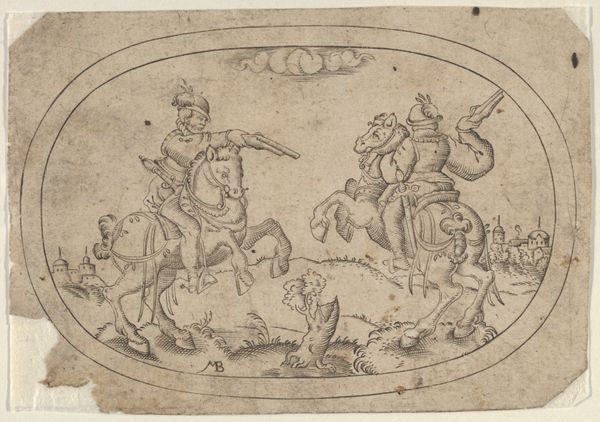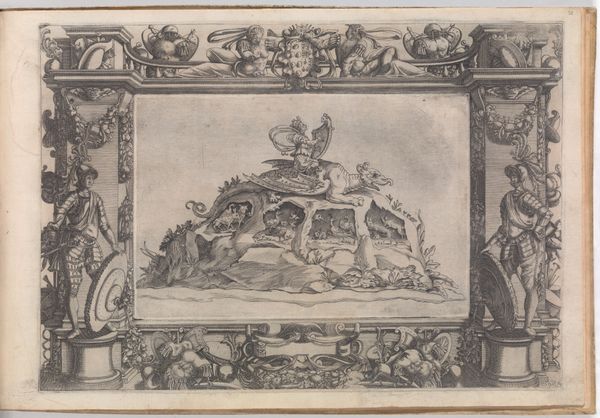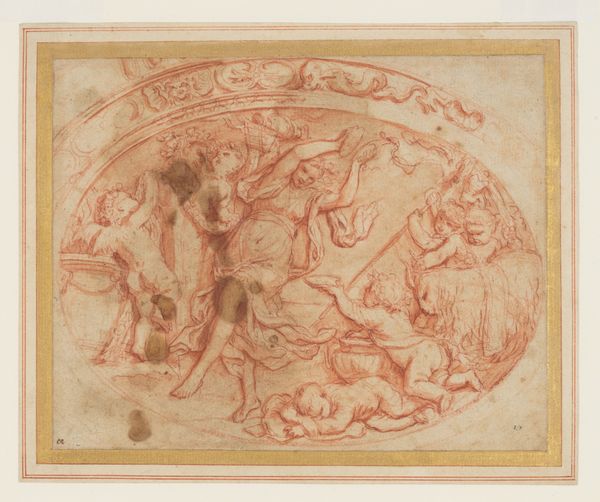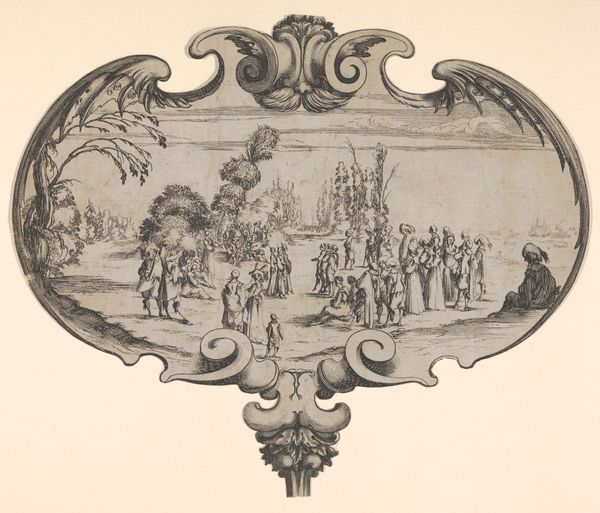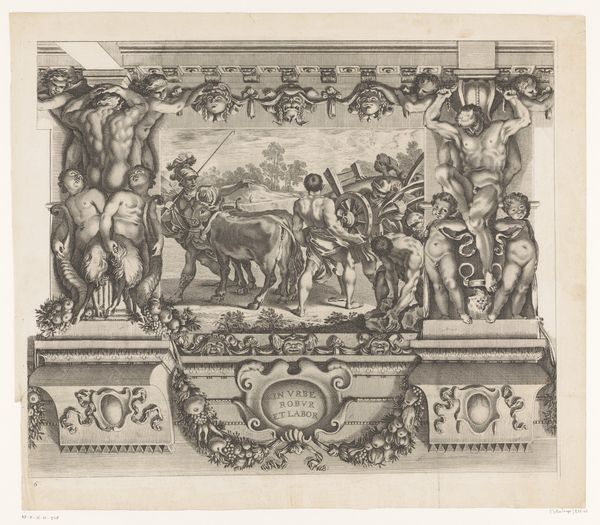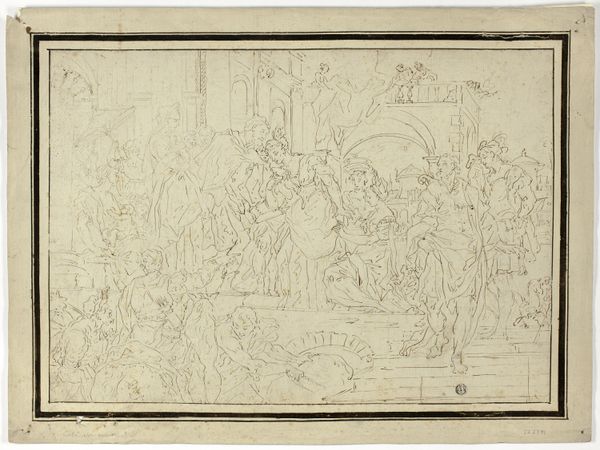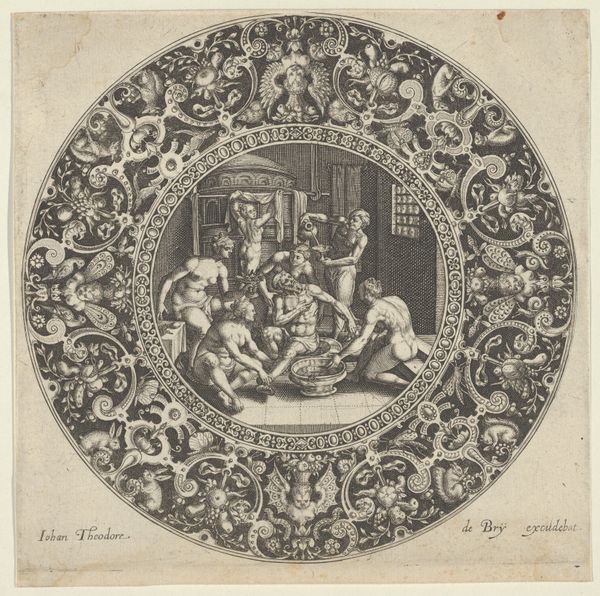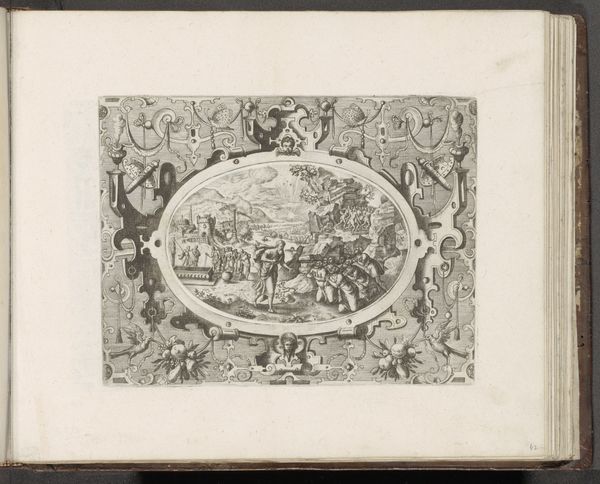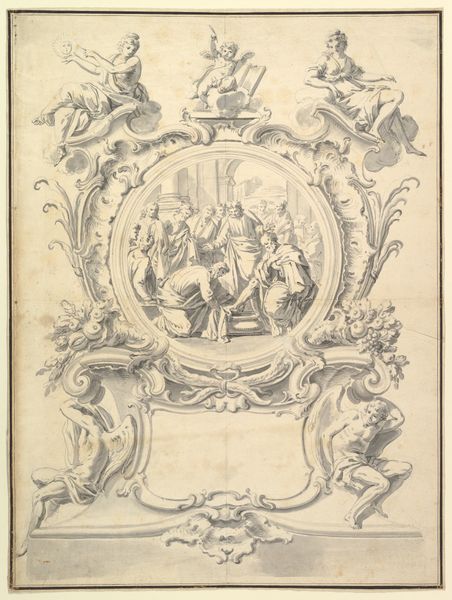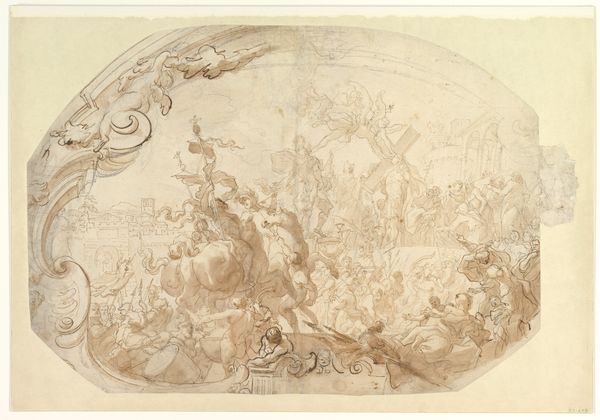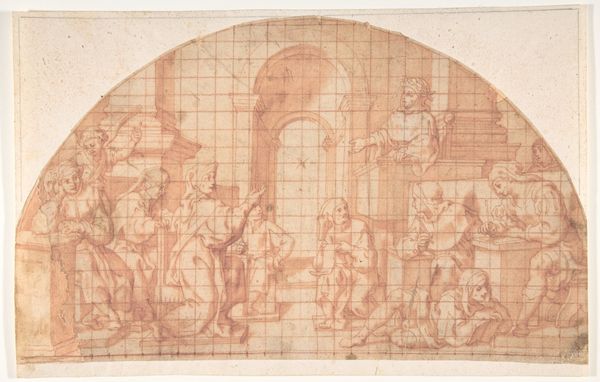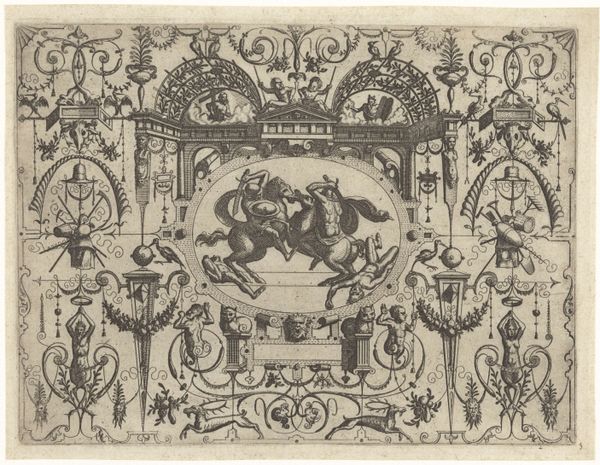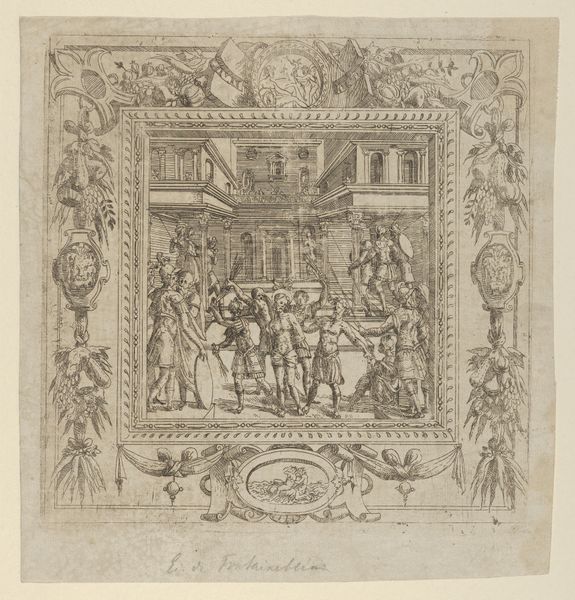
Design (Full-Scale Working Drawing) for a Large Oval Silver Dish with Silver Gilt Border Showing Vulcan's Forge 1646 - 1722
drawing, print, watercolor, ink
drawing
allegory
baroque
ink painting
watercolor
ink
linocut print
watercolour illustration
history-painting
decorative-art
Dimensions: sheet: 20 7/8 x 30 1/2 in. (53 x 77.5 cm)
Copyright: Public Domain
Curator: Looking at this work by Giovanni Giardini, "Design (Full-Scale Working Drawing) for a Large Oval Silver Dish with Silver Gilt Border Showing Vulcan's Forge", made sometime between 1646 and 1722, my immediate impression is one of bustling industry framed by elaborate ornamentation. It feels both dynamic and controlled. Editor: It’s captivating how Giardini envisions the scene with such intricate detail. There’s this tension, I think, between the divine spectacle, framed within these social markers of status, like the precious metal intended for the dish. Does that interplay reflect broader socio-political themes of the period? Curator: Absolutely. This drawing provides insight into the world of elite patronage and the social function of art during the Baroque period. Luxury items like this dish weren’t simply decorative; they communicated power and taste. We can consider, too, how access to this kind of object both cemented and visualized the societal hierarchies. Editor: The allegory is interesting too. It's not just about displaying wealth; the story of Vulcan’s forge brings themes of creation, craft, and even fire, maybe subtly hinting at disruptive, transformative power through the artistic lens? Curator: That's a great point. The choice of Vulcan is itself significant. He's the god of the forge, yes, but also a marginalized figure within the Olympian pantheon, a bit of an outsider even with all of that masculine virility in the artistic representations. Maybe Giardini—or his patron—was drawn to that aspect? To further situate the political ramifications, can we think about whose vision of history, or social mobility, gets emphasized through artwork like this, both in its manufacture and function? Editor: The interplay of media here strikes me. The delicate ink and watercolor giving life to a concept for what would ultimately be a hard, reflective silver piece. The drawing then also becomes a historical document. Curator: Yes, absolutely. And in its medium, too, it becomes another type of document altogether. A working drawing gives us direct insight into the creative process, into how art served not just aesthetics, but social roles. Editor: It truly illustrates how artistic skill intertwined with social standing and political messaging in the Baroque era, doesn’t it? Curator: Precisely. It's more than just a pretty drawing; it’s a window into a complex world.
Comments
No comments
Be the first to comment and join the conversation on the ultimate creative platform.
